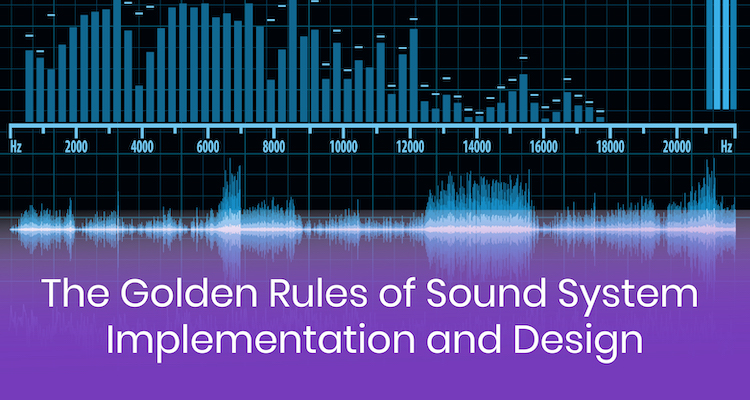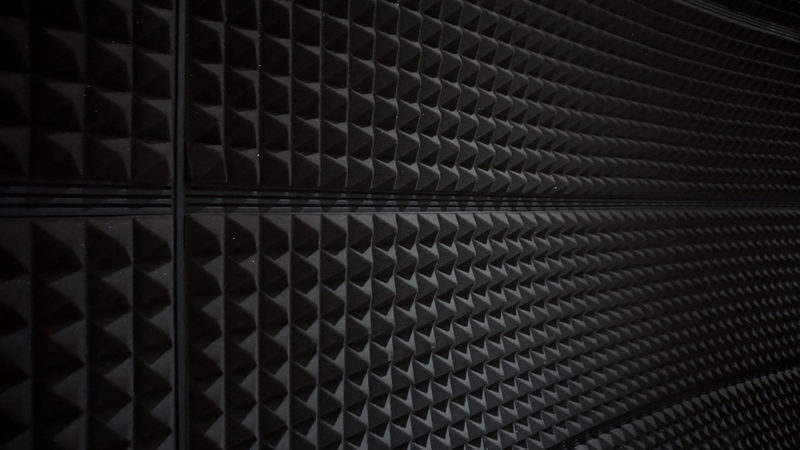The Golden Rules of Sound System Implementation and Design

Disclaimer: This is one of those topics that seems to require periodic reminders and refreshers. Why this is the case is one of the great mysteries of the AV life, but we seem to lose sight of the core principals reasonably regularly, and thus — the following is your scheduled reminder that the foundational rules have not changed and — by the way, won’t. Physics is still physics.
What’s old is new again — or is it?
After nearly five decades in this industry, you’d think that it would be hard to astonish me anymore. After all, I think that I’ve had enough exposure to the good, the bad, the ridiculous, indifferent designs and poor-quality installs of apathetic incompetence and just plain weird possibilities created by the minds of our fellow travelers. But you would be wrong.
Despite the voluminous propaganda to the contrary, it is improbable that the underlying physical rules that govern the AV world will change in the foreseeable future*, and more importantly, advertising gyrations cannot alter those rules to meet a predetermined outcome. But that fact does not seem to deter the members of the rules don’t apply to us horde since they keep trying daily.
*(Assuming that the universe remains relatively stable for the next billion years or so — which according to all reputable astrophysicists is a reasonable assumption.)
The Big Picture
To truly grasp this conundrum, let’s go back to a world where all the basic, standardized, normal rules of physics still apply. If you don’t recognize that at least for the audio side of our multi-faceted technological wonderland, those laws and regulations even matter, and that, that logical world actually exists, then you can stop reading right now because you’ve hopelessly gone astray.
The Universal Physical Constants — Yes, They Do Exist
Audio and acoustics are totally governed by the four-plus centuries of the modern iterations of the clearly established and universally acknowledged laws of physics. As far back as ancient Greece circa 400 B.C., the concepts of acoustic rules were recognized and exploited.
The intact nature of the rules of physics and nature remain true — although for all of our modern industrial history (well over a century’s worth), well-funded marketing and sales departments have attempted to create products/specs that don’t obey these defined rules. (See above and below for examples.)
Alternate Realities or Fun With Math
The most famous mission statement (in my opinion) associated with this alternative reality/philosophy was created some years ago at a consumer electronics show. The company in question had posted a large signboard at the entrance to their demo suite in the now-defunct Sahara bungalow complex. I’ll never forget it. It was so stunning that I offered to buy the sign for my office as a memento of this new reality.
That stunning piece of intentionally ambiguous/confusing gobbledygook, with full smoke and mirrors on display, said, “Our products do not violate the known laws of physics — they just use other laws.”
Really?
Also, where can one find the supporting documentation for those other laws? I would be willing to bet the current multi-trillion-dollar national debt of the U.S. that those documents do not exist now, nor will they ever be available.
Magic, and Not the Good Kind
Magic zero phase shift equalizers; amplifiers that have noise floors far below that of the theoretical limit of the solid-state circuit devices being used**; power amplifiers that can, by some inter-dimensional, dilithium crystal-based technology, create power outputs well beyond the maximum electrical limits of their power supplies and the thermal limits of the amplifying devices — need I go on?
(**We have seen published data on power amplifiers with a listed noise-floor specification below the theoretical minimum of a pure silicon wafer — a fascinating exercise in hype and puffery.)
Magic indeed, or maybe it’s just plain B.S.
How about loudspeakers capable of a reproduced bandwidth well above the maximum physical capabilities of the electro-acoustic drivers employed. And the beat goes on every day.
The Big Lie
All that miraculous technology pales in comparison to the designs for sound reinforcement systems that ignore the basic principals of sound propagation and device capability.
The litany of examples of incredibly incompetent or just plain absurd installations that I have personally seen is almost endless. Pick up any issue of an industry trade magazine and odds are you will find an installation that clearly cannot and would not work under any rules of physics or even common sense and logic.
I’m sure you have your own list/hall of shame. I hesitate to use more forceful adjectives because I don’t see the point in showcasing the infinite depths of blind ineptitude that turn up in the audio/sound reinforcement installation side of our industry.
What is the Goal?
As far as I know, we are in the business of providing sound re-enforcement/enhancement systems and the associated technology. The purpose of all that stuff is to in the most basic terms:
- Provide intelligible speech to the entire audience and only that audience.
- Provide sufficient level and clarity to ensure all audience members can clearly hear and understand the spoken word first and foremost. If any other content is required, it must also be provided at a clear, undistorted and spectrally balanced level with sufficient coverage to allow all members of the audience to hear and understand.
- CRITICAL RULE: You never want to hear any audience member with nominally good hearing asking, “What did he/she/they say?” because the sound system could not provide undistorted clear speech reinforcement.
- Nothing in the system should create or intrude upon the delivery of accurate natural reproduction — EVER!
Achieving the Golden Rules
Although many long, erudite tomes have been written about these topics, it can be boiled down to just a few precise rules of the road to achieve the stated goals.
- Point and focus all loudspeakers only where their output will land on the people in the audience and NOWHERE ELSE. With today’s directionally steered, controlled and focused systems, this is eminently achievable.
- At all costs, keep sound off of any reflecting surface or surfaces that will create echoes, bounces, interference patterns, or other disturbances that will degrade audible performance.
- Ensure that all presenters, speakers and content providers clearly understand how to use the system and how to achieve precise and quality delivery of their content, including mic technique and proper position/speaking level.
- There is no such thing as a perfect room or space — all spaces and rooms have issues. Therefore, you must determine in advance of design and install what those problems are and how to solve or mitigate them.
- Never try to solve an acoustically or physically created problem with electronics. It will not work. The reverse is also true.
- Finally, use your ears to judge quality and accuracy. While the test and measurement system provides excellent data IF adequately used, the ultimate judge of system quality is the ears of the users, so use yours to verify the system results.





